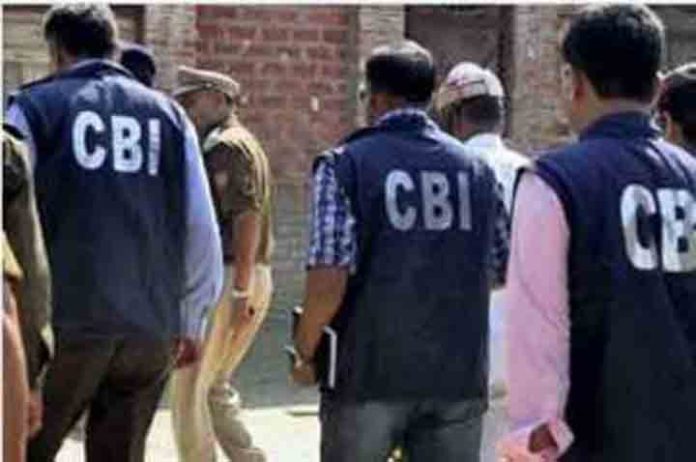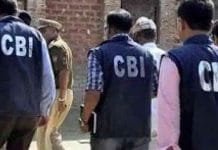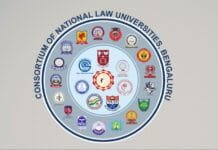Description: The CBI has filed its first chargesheet against 13 individuals in the NEET paper leak case, utilizing advanced forensic techniques and AI technology. The investigation, initially registered in Patna, continues with several accused in custody and ongoing efforts to uncover further details.
Introduction
INVC NEWS
New Delhi : In a significant breakthrough, the Central Bureau of Investigation (CBI) today filed the first chargesheet in the NEET paper leak case, naming 13 accused individuals. This case, which has rocked the nation’s education system, highlights the lengths to which some will go to game the system. The accused, including Nitish Kumar, Amit Anand, Sikandar Yadavendu, Ashutosh Kumar-1, Roshan Kumar, Manish Prakash, Ashutosh Kumar-2, Akhilesh Kumar, Awadhesh Kumar, Anurag Yadav, Abhishek Kumar, Shivnandan Kumar, and Ayush Raj, have been charged under multiple sections of the Indian Penal Code (IPC). The investigation, initially started by the Patna Police and later transferred to the CBI, utilized cutting-edge forensic techniques and artificial intelligence to gather evidence.
The Unfolding of the NEET Paper Leak Case
Initial Discovery and Transfer to CBI
The case first came to light on May 5, 2024, when it was registered at the Shastri Nagar Police Station in Patna. As the complexities unraveled, it became evident that a more robust investigative body was needed. Consequently, on July 23, 2024, the investigation was handed over to the CBI. The transition marked the beginning of a meticulous and high-tech investigation aimed at bringing the culprits to justice.
Advanced Forensic Techniques at Play
To build a strong case, the CBI employed a range of advanced forensic methods. These included:
- Artificial Intelligence Technology: AI algorithms analyzed vast amounts of data to identify patterns and anomalies.
- CCTV Footage: Reviewing hours of footage from various locations to track movements and interactions of the suspects.
- Tower Location Analysis: Mapping mobile phone tower pings to establish the presence and movements of the accused at critical times.
The Charges and the Accused
The chargesheet filed by the CBI names 13 individuals accused under sections 120-B (criminal conspiracy), 201 (causing disappearance of evidence), 409 (criminal breach of trust by a public servant), 380 (theft in a building), 411 (dishonestly receiving stolen property), 420 (cheating), and 109 (abetment) of the IPC.
Who Are the Accused?
Let’s delve into the profiles of the accused:
- Nitish Kumar: Alleged mastermind, known for his connections within educational circles.
- Amit Anand: Facilitator, allegedly coordinated with students and other conspirators.
- Sikandar Yadavendu: Middleman, linked students with the paper leak sources.
- Ashutosh Kumar-1: Tech-savvy operator, involved in the digital aspects of the leak.
- Roshan Kumar: Logistics manager, handled the distribution of leaked papers.
- Manish Prakash: Ground operator, ensured smooth operations during exams.
- Ashutosh Kumar-2: Another tech handler, assisted in encryption and communication.
- Akhilesh Kumar: Financial handler, managed the monetary transactions.
- Awadhesh Kumar: Insider, worked within the examination system.
- Anurag Yadav: Liaison, maintained connections with higher-ups.
- Abhishek Kumar: Distributor, spread the leaked papers to students.
- Shivnandan Kumar: Coordinator, managed the entire network.
- Ayush Raj: Newcomer, recently recruited to expand the network.
The Investigation: A Deep Dive
High-Tech Methods and Persistent Efforts
The CBI left no stone unturned in their investigation. Using state-of-the-art technology, they pieced together a complex puzzle that involved extensive data analysis and surveillance. The tower location analysis alone provided critical insights, revealing the movements and meetings of the accused.
Day-to-Day Progress
The investigation is a daily grind, with new revelations emerging regularly. The CBI has already arrested 40 individuals, including 15 apprehended by the Bihar Police. Searches have been conducted at 58 locations, uncovering crucial evidence that strengthens the case against the accused.
The Impact of the NEET Paper Leak
On Students and the Education System
The NEET paper leak has far-reaching implications. Thousands of students, who studied tirelessly, found their dreams jeopardized by the actions of a few. The integrity of the examination system has been called into question, leading to widespread calls for reforms.
The Response from Authorities
In response to the scandal, education authorities have tightened security measures and introduced new protocols to prevent such incidents in the future. The CBI’s rigorous investigation serves as a stern warning to those contemplating similar actions.
FAQs
What is the NEET paper leak case?
The NEET paper leak case involves the illegal distribution of exam papers before the National Eligibility cum Entrance Test (NEET), allowing some students to gain an unfair advantage.
Who are the key accused in the case?
The key accused include Nitish Kumar, Amit Anand, Sikandar Yadavendu, Ashutosh Kumar-1, Roshan Kumar, Manish Prakash, Ashutosh Kumar-2, Akhilesh Kumar, Awadhesh Kumar, Anurag Yadav, Abhishek Kumar, Shivnandan Kumar, and Ayush Raj.
How did the CBI gather evidence?
The CBI utilized advanced forensic techniques, AI technology, CCTV footage, and tower location analysis to collect evidence against the accused.
What sections of the IPC have the accused been charged under?
The accused have been charged under sections 120-B (criminal conspiracy), 201 (causing disappearance of evidence), 409 (criminal breach of trust by a public servant), 380 (theft in a building), 411 (dishonestly receiving stolen property), 420 (cheating), and 109 (abetment) of the IPC.
What is the current status of the investigation?
The investigation is ongoing, with several accused in custody and further chargesheets expected as more evidence is gathered.
Conclusion
The NEET paper leak case, now under the meticulous scrutiny of the CBI, underscores the critical need for integrity in the education system. As the investigation progresses, the CBI’s first chargesheet against 13 accused individuals marks a significant step towards justice. Utilizing advanced forensic techniques and AI technology, the agency has built a robust case that could serve as a deterrent against future malpractices. As we await further developments, it’s clear that the authorities are committed to upholding the sanctity of educational assessments in India.
In summary, the NEET paper leak case has not only highlighted the vulnerabilities in the examination system but also showcased the power of modern investigative techniques in uncovering complex conspiracies. The CBI’s relentless efforts and the resultant chargesheet provide hope that justice will be served, and such incidents will become a thing of the past.




















